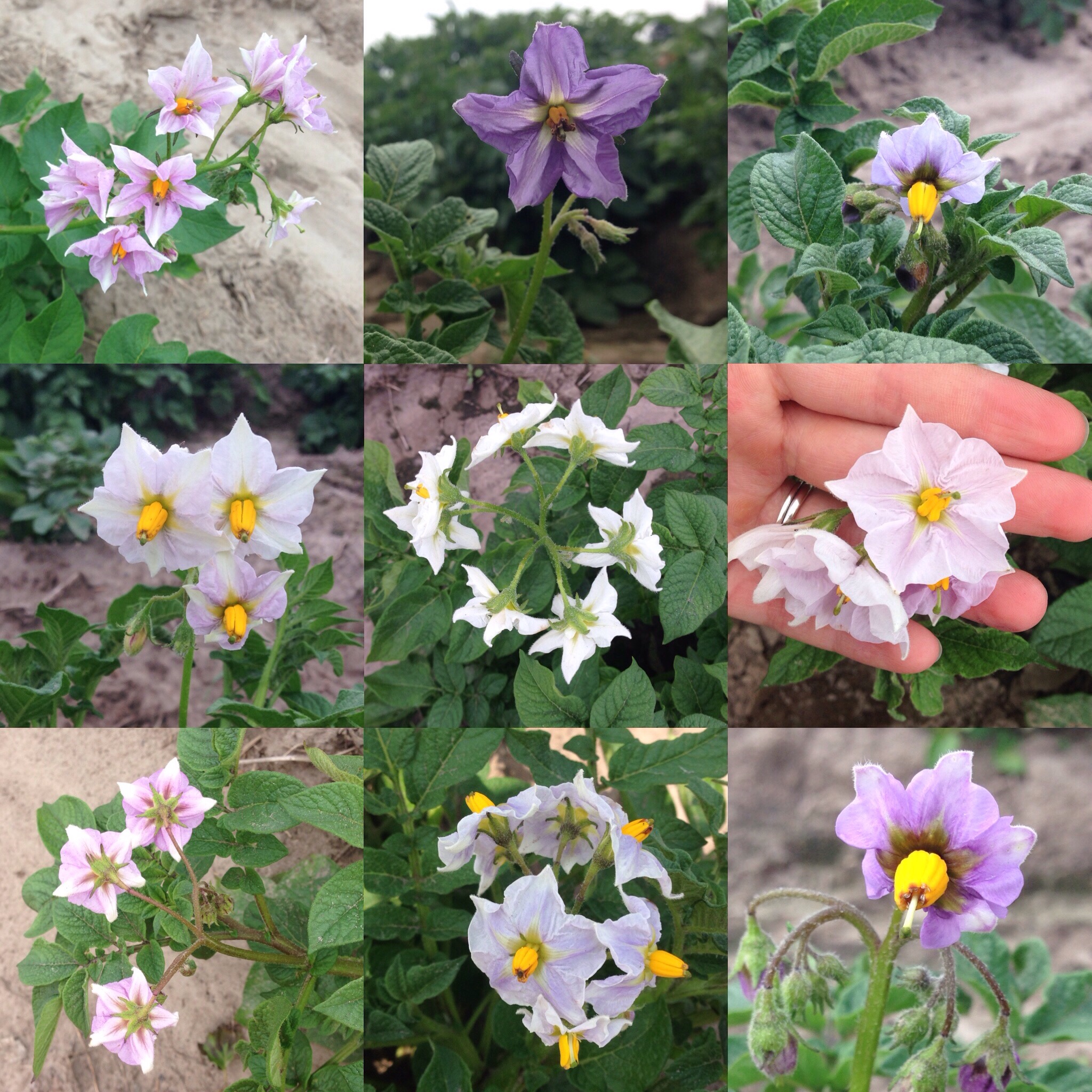Overview
- Increasing our understanding of potato genomics, diversity, and evolution
- Developing and applying methods to speed the potato breeding process
- Breeding new potato cultivars for four distinct market classes with increased resistance to biotic and abiotic stresses and enhanced nutrition and quality traits, which require fewer inputs (fertilizer, pesticides, irrigation, etc.)
Characterizing the diversity and history of potato

Understanding the structure and history of genomes and how diversity is partitioned within populations has facilitated genetic gain in a variety of crops. Because of the complexity of the potato genome there are a range of outstanding questions about potato history including: the number and timing of domestication events, the identity of the wild progenitor, and the number of cultivated species. We collaborate with the International Potato Center in Lima and the US Potato Genebank in Sturgeon bay to develop a better understanding of the history of potato.
Consequences of whole genome duplication
This research explores whole genome duplication (WGD) as an evolutionary force by identifying the consequences of WGD in respect to allelic dosage and deleterious alleles.
Automated image analysis
Tubers from the breeding program are being imaged to create accurate and quantitative measures of horticultural traits that impact consumer acceptability in fresh market potatoes.
Creating diploid potato populations for breeding and genetics

One option for addressing the complications of tetraploid breeding is to shift to breeding at the diploid level. Moving to a diploid, inbred-hybrid breeding system would allow for faster breeding cycles, better control of traits, and reduce the disease transmission problems that come with clonal propagation. Because of these potential benefits, diploid breeding is of great interest to the potato community as a whole in both the public and private sectors.
Genomic selection

Potato breeding schemes typically involve making crosses among several advanced selections or cultivars from within the same market class, followed by recurrent selection. Breeders tend to evaluate the progeny for upwards of six years, applying selective pressure upon a multitude of traits. Concurrently, promising varieties are clonally increased so that they might be evaluated in larger plots and at several locations. This has resulted in genetic gain for specific gravity and chip color over time. Coupled with GS, high throughput phenotyping technologies that increase the reliability of phenotypic observations will increase selection accuracy in the breeding program. With an increase in accuracy, higher genetic gains per cycle will be attained. One area that will be explored extensively is imaging and automated image analysis. Image analysis has already been applied to identifying tuber skin color defects and chip color, and x-ray can be used to identify tubers with the hollow heart defect. An added advantage of imaging is that it can be utilized as a nondestructive method, sometimes allowing for analysis of the same plot or tubers across time. Moreover, efficient technologies and automated pipelines allow for larger populations to be analyzed for more traits and across many locations, increasing the likelihood of creating and identifying superior varieties for Minnesota growers and processors.
Nitrogen use efficiency
Finding both causal and consequent phenotypes associated with Nitrogen fertilizer rates to gain insight on the mechanisms and consequences of breeding for nitrogen use efficiency. We hope to direct future efforts breeding for NUE.
Effects of reduced nitrogen on red potato yield, skin set, and color
The effects on reduced nitrogen application at planting are being determined for the most commonly grown red potato varieties. The varieties will be compared for yield, skinning, color, and defects across varieties, years, and five rates of applied nitrogen. This study will provide a benchmark against which to compare breeding stock under consideration.